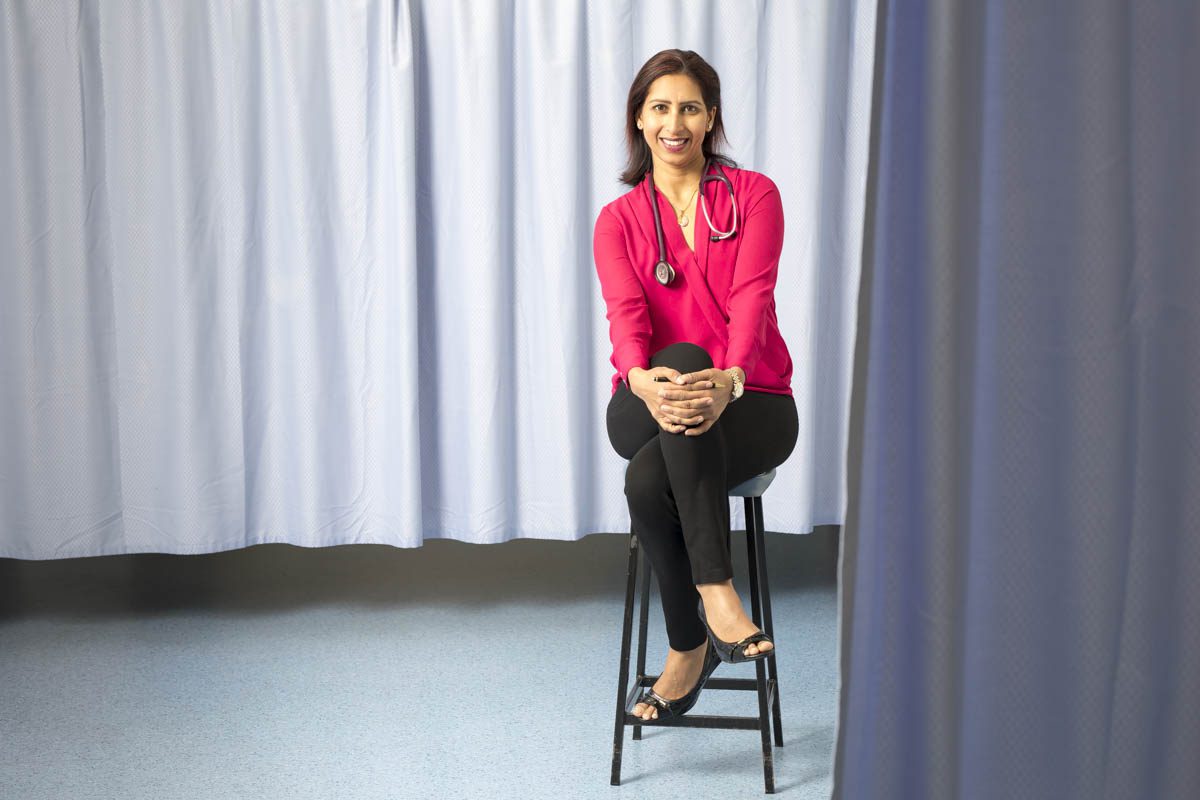
Dr Ranjana Srivastava literally wrote the book for students thinking about a career in medicine, and our interview with her when it was released is among our most popular. In these extraordinary times for the medical profession, we returned for a Q&A update.
First, the question we ask everyone at the moment, what has the pandemic meant for you, both at a personal level and your work as an oncologist?
The pandemic has had a significant impact on the practice of medicine but especially so for my patients who often have advanced cancer and are in the most elderly and vulnerable group.
Together, we have made decisions about if, when and where to receive treatment and how to reduce the burden of complexity. We have had many difficult conversations about mortality and advance care planning, which are really a staple for my practice but the pandemic has brought these issues to the forefront of our minds.
Finally, we have had to assess the benefits and drawbacks of medicine via telehealth, which is great in some circumstances but clearly inadequate in others. Internet connections and individual confidence are not uniform throughout the population. And then, nothing replaces the human touch in medicine and we have all felt its absence. That’s why it’s particularly special to welcome some patients back into the clinic in the past few weeks to check on them. (Ed’s note: This interview was conducted before the latest restrictions.)
You’ve been talking to many students and educators about a career in medicine. Do you think the pandemic has heightened interest among young people about a medical career?
Interest in becoming a doctor is always high so only time will tell whether the pandemic creates another spike in interest. Perhaps the able performance of our public health officials and frontline workers will leave an impression on minds, old and young. As a frontline worker, I am reminded of the privilege of being a doctor and offering help and solace to patients in an extraordinary time.
The book has been out for more than a year now and has proved very popular. What kind of reactions are you getting?
I was very clear when I wrote the book that I saw it as an extension of public service to answer the commonest questions that my colleagues and I are asked on a regular basis about a life in medicine. Anyone who enters medicine should do with eyes open to the many highs and the significant lows. It’s rather sad to find a student or young doctor who realises years down the track that medicine really wasn’t the right career for them – sometimes, there is a surmountable challenge but other times, it really was the wrong choice, made under pressure or with vague expectations.
While no one can future-proof a decision, I am a great believer in making the most informed decision you can at the time, which requires honest and unsentimental information. This is what I have tried to do in my book after speaking to many students, aspiring doctors and educators and reflecting on my own times.
So to see this book stocked in school libraries and the shelves of career counsellors is gratifying. My hope is that not only students but also parents will take the time to read it. It’s a short book on purpose!
Is there one piece of advice that you would give young people thinking about a career in medicine?
Medicine is a wonderful career and an utter privilege in many ways. However, it has to be right for the individual. Stellar marks and a desire to help people should not be the sole criteria on which to decide on what is in many ways a life-changing decision.
I think students need to talk to other doctors, engage in some work experience, even if for one or two days, and talk deeply with their family and educators about their decision. Having done this, most students do go on to have a satisfying career in medicine but for a small proportion, medicine becomes a recipe for unhappiness. My personal feeling is that such students deserve our full understanding and support to change their path and the notion that they are somehow throwing away prestige and future success should be abandoned for everyone’s sake.
Read our first interview here.
Like this post? Please share using the buttons on this page.

About Dr Ranjana Srivastava and the book
Ranjana Srivastava is an Australian oncologist, award-winning author and Fulbright scholarship.
What it Takes to Be a Doctor, an Insider’s Guide, by Dr Ranjana Srivastava, is published by Simon & Schuster.
Dr Srivastava is available for teacher and student talks. You can contact her at feedbackrsriv@gmail.com
She is also a columnist for The Guardian, and you can find her articles here.
Supplied images by Dean Golja, Image United.
Subscribe to The Parents Website
